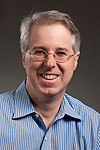Accelerator technology applications for society
 |
|
Stuart Henderson
|
Stuart Henderson, Fermilab's associate director for accelerators and a member of OHEP's task force for accelerator applications, wrote this column.
At Fermilab, we are fortunate to work in a field that focuses on the big questions in science like, "what is the world made of?" and "what is the future of the universe?"
To try to answer these questions, we need specialized technology. Over the last 80 years particle accelerators were developed to produce beams of particles and propel them to higher and higher energies with higher and higher intensities. At the same time, detector technology has been developed to record the fleeting appearance of particles that are produced at accelerators. We often find that taking the next step in particle physics requires pushing the technology of accelerators and detectors beyond the present state.
Not only does this push to develop technology aid in our research at Fermilab, but it also benefits society in direct and tangible ways. Well-known examples include the development of medical accelerators for cancer treatment, the growth in magnetic resonance imaging that followed on the heels of the industrialization of superconducting wire developed for the Tevatron, and the World-Wide Web, which was developed as a tool to link and access information within the particle physics community.
Congress has recently recognized the importance of accelerator technology to society and affirmed the potential that it holds for solving real-world problems. In fact, Congress has asked DOE's Office of High Energy Physics to formulate a strategic plan for the development and application of accelerator technology to medicine, national security, energy, the environment, industry, as well as the sort of fundamental science we pursue at Fermilab. This request formalizes the role that OHEP has traditionally had in stewarding the development of accelerator technology.
OHEP in turn has formed a task force to provide advice on the formulation of this plan. I am a member of this task force, working with the chair, Norbert Holtkamp from SLAC, as well as the other members to provide advice on ways to advance the application of accelerator technology to fulfill the stewardship mission. The task force wants to hear from the community, and we created a blog to enable discussion and the exchange of opinions and ideas.
At Fermilab, we have a tremendous opportunity to do exactly what Congress is urging and strengthen the connection between particle physics and its benefits to society. We are in the early stages of planning a program in Technology Applications in order to take deliberate steps toward applying particle physics technology to larger societal problems. The Illinois Accelerator Research Center will serve as a focal point for these activities, since it has a mission to do just that.
As the national particle physics laboratory, our focus is on advancing fundamental knowledge. That mission is enabled by the tremendous capabilities and expertise that we possess—expertise that has much to offer society.
|